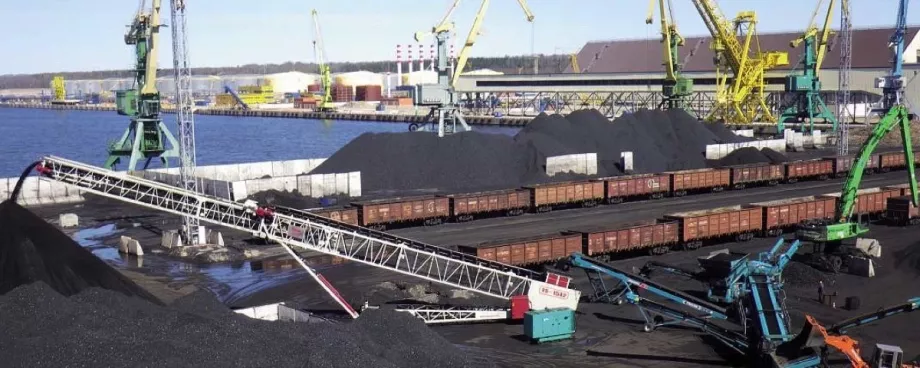(From the archive of ”bulk solids handling", article published in Vol. 32 (2012) No. 2 , ©2012 bulk-online.com)
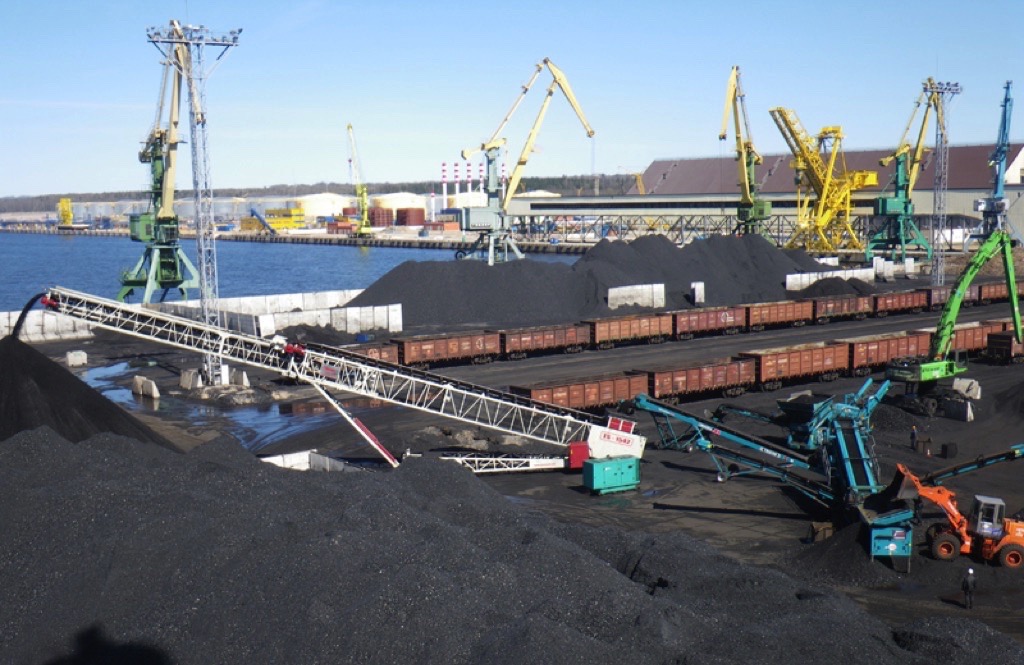
Typical operations in either developing a green-field site or upgrading a current stockyard operation would use a stacker/reclaimer system for all their needs in terms of stockpiling and reclaiming of the bulk material.There are many manufacturers of stacker/reclaiming systems worldwide with varying associated capital costs depending on the customers requirements. Also, other substantial costs associated with this type of installation includes civil requirements, planning permission, government legislation, etc., which further increase the capital expenditure and time frame of the project.
An Alternative to the Stacker/Reclaimer System
The mobile systems can offer a cost efficient alternative to stacker/reclaimer systems. Telestack specialise in the design, manufacture and installation of a complete range of mobile stockyard management solutions for handling dry bulk materials.The range of equipment takes into consideration the "day to day" operational capabilities of any stockyard system, consisting of stockpiling, reclaiming, truck unloading and linking conveyors. The company's equipment offers the operator cost efficient solutions with high mobility and flexibility for any stockyard system.The equipment is designed for operators handling up to 5 million tonnes per year with a single system, while still maintaining the required production capacities. For those upgrading their current system from an older stacker/reclaiming system to a new design, the robust design of the Telestack equipment ensures that the operator can maintain their current tonnage per year while limiting their capital expenditure.For those developing new greenfield sites, this type of equipment is perfect for the initial "start-up phase" of the project. The lower capital costs and no civil requirements/limited planning permission are the main advantages of the equipment in comparison to fixed stacker/reclaiming systems. The equipment allows the operator to begin phase one of the stockyard very quickly and easy with short leads times, in case of Telestack equipment as short as 12 weeks from order.The company has also designed their systems in such a way, that all units can be packed into 40 feet containers for shipping globally and fully built on site within one week, with limited planning permission, civil requirements, etc.
Stockpiling, Reclaiming, and Truck Unloading
The mobile equipment allows for a range of stockpiling requirements depending on the customer needs and height restrictions within the stockyard.The radial telescopic conveyors manufactured by Telestack, for example, are heavy duty stockpiling conveyors up to 58 metres in length which allow for a maximum stockpile height of 20 metres and up to 200,000 tonnes storage capacity (based on a material density of 1.6 tonnes per cubic metre).The luffing (up/down) mechanism of the stockpiling conveyors allow the operator to use the units even in areas with restricted stockpile height. Also, the automatic PLC stockpiling system reduces the labour required to operate the equipment, while also reducing the degradation, segregation, contamination and compaction of the bulk material.
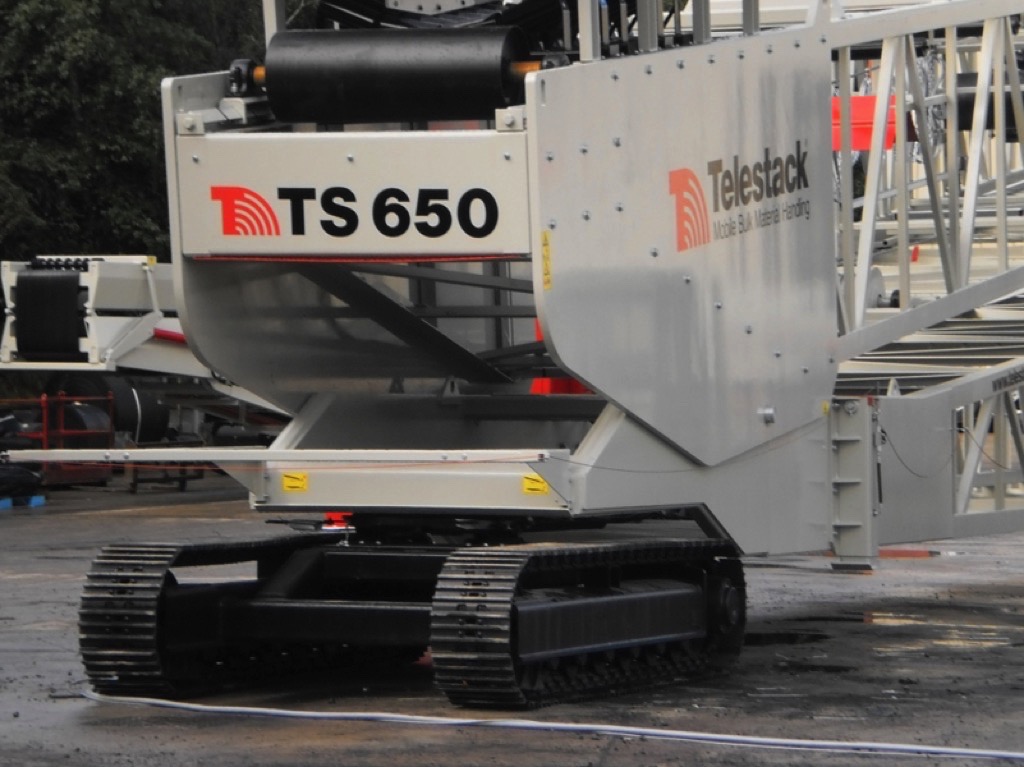
The robust heavy duty design stockpiles up to 2500 tonnes per hour with the ability to handle a complete range of materials from coal/pet coke to iron ore which is ideal for multi-material stockyards.The mobility of the units are key to ensure production rates are maintained changing from one stockpile to another, Telestacks’ integrated tracked dolly units (see Fig. 2) ensure a highly mobile independent unit on harsh ground conditions within the stockyard.The radial telescopic stockpiling conveyor can be fed directly from the mobile link, reclaim and truck unloading conveyors to stockpile in the yard. The mobility allows the units to move back and around the stockyard to maximise the space and thus the efficiency in the yard (see Fig. 3) as required, while limiting downtime in the stockpiling process.
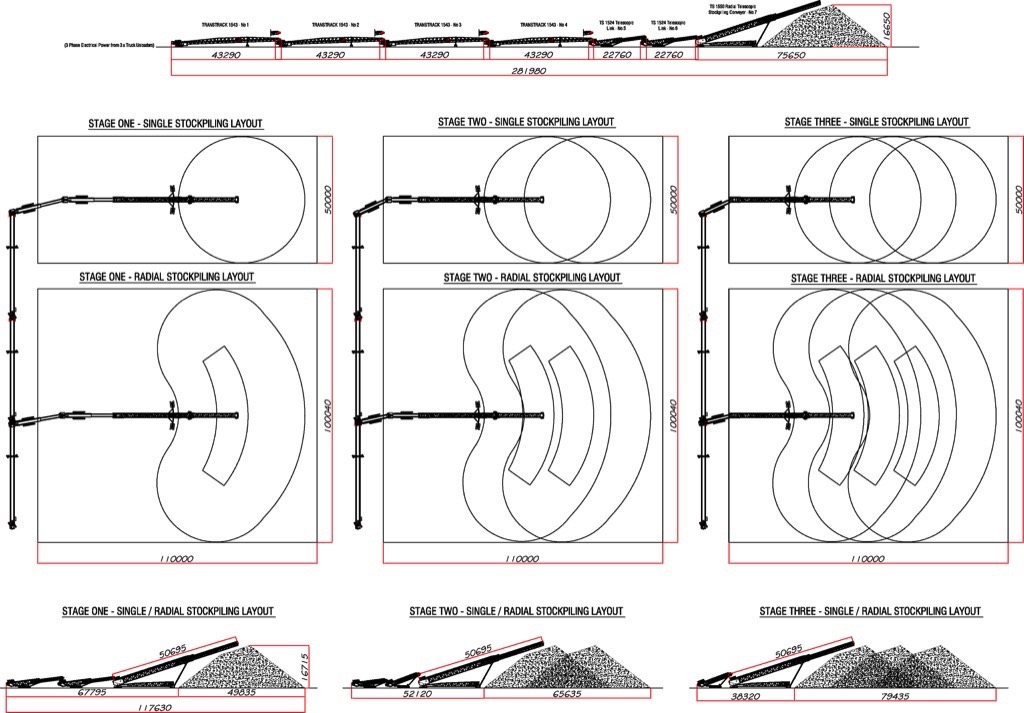
Utilising the Mobile Equipment for Reclaiming
Mobile equipment, e.g. from Telestack, is ideally suited for either the stockpiling process or the reclaiming process, the multi functionality of the equipment limits the capital expenditure while still maintaining the production capacities. The mobility of the units allows the change over from stockpiling mode to reclaiming mode very easily. When the stockpiles are built, the mobile reclaim hopper is situated next to the stockpile with multiple link conveyors utilised to limit the haulage distance of the wheel loaders.
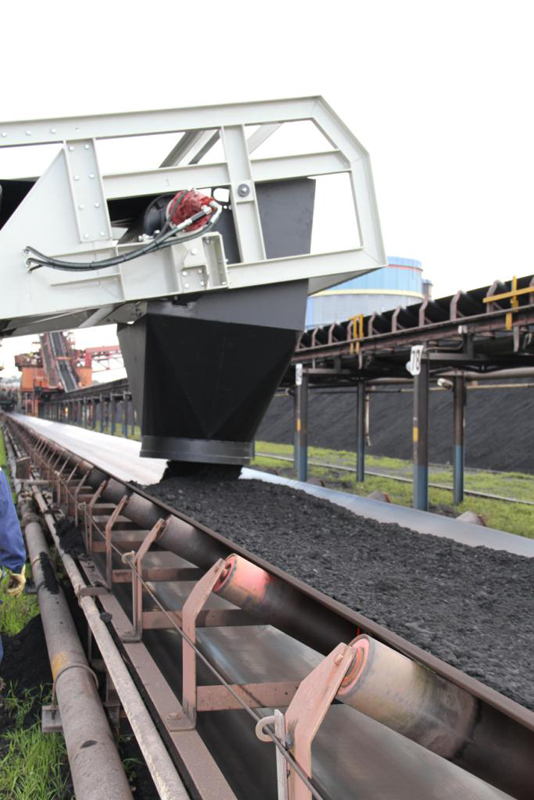
These link conveyors can then feed directly onto the overland conveyor system. The mobile reclaim hopper and truck unloader can both be used to fed directly onto the overland conveyor system (if required), see Fig. 4, which eliminates the double of the material. The mobile truck unloader can also be fed directly from trucks in the stockyard to feed the overland conveyor system, again to increase production capacities during the reclaiming process.The mobile reclaim hopper, truck unloaders and link conveyors, already used in the stockpiling process, give the operator the complete package for an efficient stockyard system.The customised nature of the Telestack units, for example, ensures they meet the needs of any application, with capacities up to 2500 tonnes per hour for both stockpiling and reclaiming. The overall benefit in the reclaiming process is the limitation of haulage distance of the wheels loaders/trucks to reduce fuel, labour and dust and emissions.
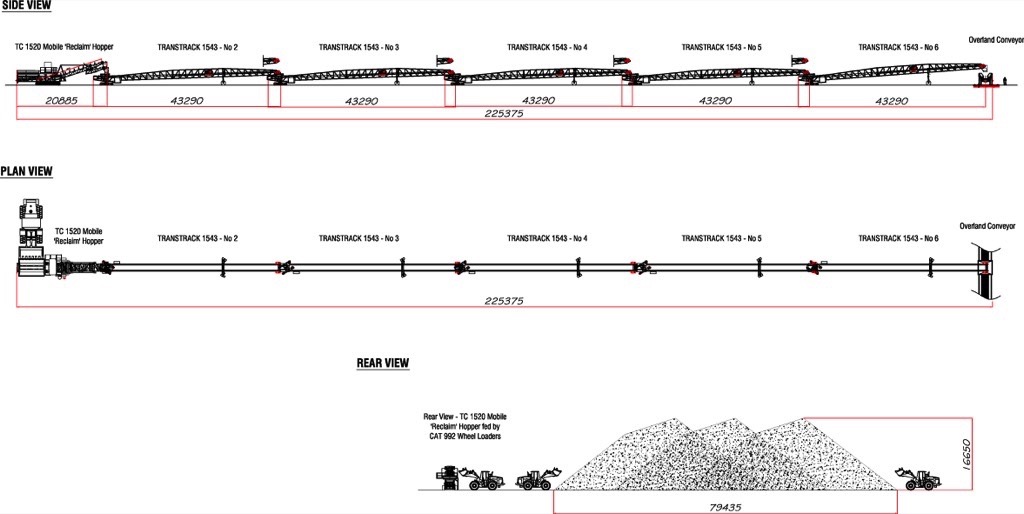
As there are so many existing stockyards using large stacking and reclaiming systems, the Telestack equipment can also be used as an emergency back up to this equipment.
Emergency Back up System for Stacker/Reclaimer
In the event of an unexpected system failure or planned maintenance downtime of the stacking and reclaiming system the mobile equipment can be used to maintain the production rates either stockpiling or reclaiming the material.This is also beneficial as the units can be utilised to service the small areas in the stockyard that the stacker/reclaimer cannot reach. In these cases, the mobile equipment can "pick up" this material and reclaim it back into the system reducing the need for equipment such as wheel loaders and trucks on site.
The complete Package for Stockyards
The mobility and flexibility of the Telestack range of equipment offers the operator the complete package for stockpiling or reclaiming, while greatly reducing operating costs per tonne in comparison to a stacker/reclaimer system. The main advantage of this equipment is the multiple functionality and quick installation time that it offers, limiting capital equipment expenditure. This is a critical point, especially in the initial "start up" phase of a stockyard, while still having the option to upgrade and incorporate multiple systems as production increases.
A Note from the Editor
For all statements in this article that refer – directly or indirectly – to the time of publication (for example “new”, “now”, “present”, but also expressions such as “patent pending”), please keep in mind that this article was originally published in 2012.
| About the Author | |
| Carl DonellySales & Marketing ExecutiveTelestack Ltd., United Kingdom |
■



